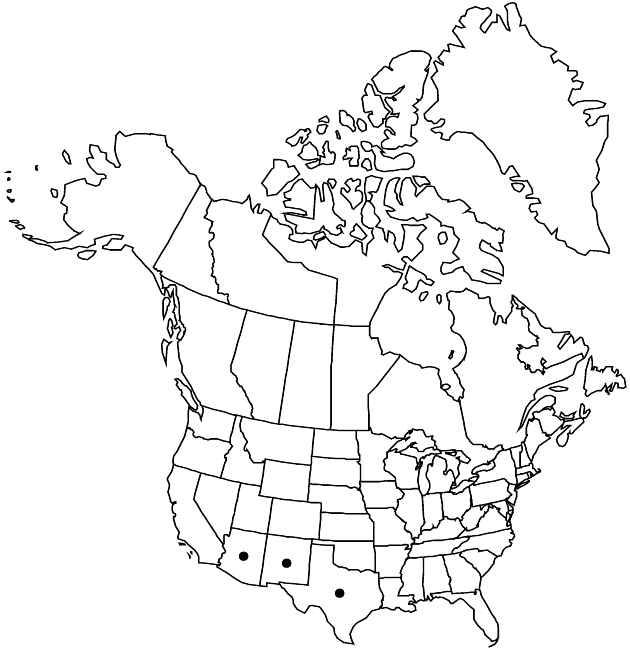Aphanostephus ramosissimus var. humilis
Phytologia 45: 501. 1980.
Basionym: Leucopsidium humile Bentham Pl. Hartw., 18. 1839
Synonyms: Aphanostephus arizonicus A. Gray Aphanostephus humilis (Bentham) A. Gray
Treatment appears in FNA Volume 20. Treatment on page 353.
Revision as of 21:16, 29 July 2020 by imported>Volume Importer
Plants 6–15 cm. Involucres 4.7–7.5 mm. Ray-florets 26-–35. Cypselae (1.1–) 1.4–1.6 mm; pappi 0 or minutely ciliate rings 0.1–0.2 mm, sometimes nearly smooth. 2n = 8.
Phenology: Flowering Apr–Jun(–Oct).
Habitat: Sand and gravel bars, limestone soils, Larrea flats, mesquite savannas, roadsides, disturbed sites
Elevation: 700–1600 m
Distribution

Ariz., N.Mex., Tex., Mexico (Chihuahua), Mexico (Coahuila), Mexico (Durango), Mexico (Nuevo León), Mexico (Tamaulipas), Mexico (Zacatecas)
Discussion
Selected References
None.
Lower Taxa
None.
... more about "Aphanostephus ramosissimus var. humilis"
introrse +
connate +
distinct +
herbaceous +
scarious +
hirsute +
papillate +
continuous +
decurrent +
1-nerved +
broadly oblanceolate;linear-lanceolate +
ribbed +
stigmatic +
persistent +
absent +
swollen +
indurate +
absent +
absent +
monomorphic +
4-12-thick-ribbed +
dimorphic +
1.4mm;1.6mm +
staminate +
straight +
distinct +
proximal +
1;5 +
bisexual +
dispersed +
Sand and gravel bars, limestone soils, Larrea flats, mesquite savannas, roadsides, disturbed sites +
straight +
singly +
indeterminate +
surrounding +
depressed-hemispheric +
alternate +
erect +
deltate +
scarious +
purplish +
broad +
2-carpellate +
inferior +
attached +
anatropous +
persistent +
absent +
tough +
thick +
absent +
connate +
1-nerved +
persistent +
appressed +
distinct +
falling +
ovatelanceolate +
acute +
Phytologia +
1980 +
pistillate +
absent +
fertile +
epaleate +
pitted +
conic +
fibrous +
awn-tipped +
connate +
setiform +
exalbuminous +
modifed +
1;3;4 +
Illustrated +
alternate +
branched +
spreading-hairy +
deltate +
2-branched +
glabrous +
Aphanostephus ramosissimus var. humilis +
Aphanostephus ramosissimus +
variety +
tubular +
hispidulo-puberulent +
taprooted +
annual +